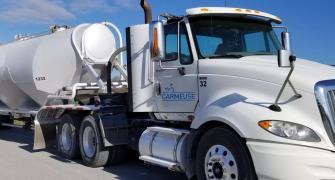
Do you have a question about this application? Ask our specialists
Contact us
The Importance of Treating Drinking Water
Clean water is essential for life on the planet, and while the Earth is made up of more than 70% water, the portion of water that is suitable for consumption is quite limited. Water originating from natural sources such as rivers, lakes, aquifers, and even manmade reservoirs can contain dirt, pathogens, and minerals that cause scale. Additionally, acidic waters can cause corrosion and leaching of heavy metals, such as lead and copper, from transport and household pipes. Overall, improper treatment of these impurities can create issues ranging from public health emergencies to colossal expenses combatting water distribution problems.
Our Role in Water Treatment
What We Do
Carmeuse and our affiliates support water treatment plants from End-2-End.
To ensure that water is safe to drink, water treatment plants often use high calcium quicklime, high calcium hydrated lime, or CALSAFE® lime slurry in their purification processes. These lime-based products are primarily used to adjust pH, soften water, and remove suspended solids from the sourced water. To learn even more about the role lime and lime slurry products play in water treatment, view our article Lime Slurry for Water Treatment.
How it Helps
- pH Adjustment – Lime products are alkali materials with a high pH and are often used in water treatment systems to neutralize the pH level of acidic waters. This adjustment helps prevent corrosion and leaching of heavy metals from pipes, protecting our water infrastructure and consumers alike.
- Hardness Control – Hydrated lime can be used to remove hardness and precipitate solids out from drinking water. It helps control hardness-causing minerals, such as calcium bicarbonate and calcium sulphate, to avoid excessive distribution pipe scaling and over-softening.
- Coagulation of Suspended Solids – Lime can be used in combination with aluminum and iron salts to promote coagulation and flocculation of suspended solids, removing impurities more efficiently and improving the performance of water clarification units.
Lime Slaking Systems & Upgrades
Over time, equipment at drinking water treatment facilities may need updated or replaced due to normal wear and tear or for the integration of new technologies. Carmeuse Systems supplies advanced equipment solutions for lime storage, handling, and slaking.
Our expert engineers can design the right solution to keep your water treatment operation running smoothly, from new lime handling systems and slakers, to retrofits and upgrades for your existing equipment. For additional information related to our lime handling expertise, visit the website.
Supplying Lime for Various Applications

Lime vs Caustic Soda for Water Treatment
When comparing the use of lime products to the use of caustic soda (sodium hydroxide) in water treatment, there are a number of considerations to take into account.
Lime is often the most cost-effective product when compared to caustic soda for use in water treatment plants. Quicklime has a stronger neutralizing capacity per dry ton than caustic soda, and it is more efficient at heavy metals precipitation.
Slaked lime is also considered a safer alternative for use in water treatment processes such as acid neutralization, pH adjustment and metals removal, when compared to caustic soda. While safety measures are required when handling lime, caustic soda is more corrosive and is extremely hazardous in terms of exposure to the skin and eyes, with the potential to cause chemical burns.
For a more detail on the advantages and disadvantages of using lime or caustic soda in water treatment, read our article, Switching to Calcium Products from Caustic Soda.










